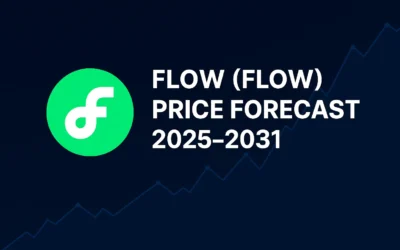Introduction
Welcome to our comprehensive guide on mastering the Dividend Capture Strategy within the framework of value investing. This strategy aims to optimize your investment returns by capturing dividends from various stocks and reallocating funds to other dividend-paying opportunities. By applying this method, you can enhance your portfolio’s income potential while maintaining a focus on value stocks.
For those who prefer selecting individual stocks, it is crucial to first understand what type of investor you are. To help with this, we have created three articles summarizing the three main types of investors: Value Investors, Growth Investors, and GARP Investors. Additionally, for those interested in passive investment strategies over a very long term (20-30 years), our guide on building a robust ETF portfolio offers comprehensive insights. Furthermore, you can learn more about investing in commodities. Also, check out our article on swing trading, which is an excellent strategy for both individual investors and professional fund managers.
In addition, we invite you to explore our latest article on how to invest in cryptocurrency. This comprehensive guide covers everything you need to know to navigate the exciting world of digital assets. You can read it here: Investing in Cryptocurrencies: A Comprehensive Guide.
What is the Dividend Capture Strategy?
The Dividend Capture Strategy involves purchasing a stock just before its ex-dividend date to qualify for the dividend payout and then selling the stock shortly after the ex-dividend date. The goal is to “capture” the dividend while holding the stock for a minimal amount of time, thus reducing the risk associated with holding the stock long-term.
How to Effectively Implement the Dividend Capture Strategy
- Identify Dividend Stocks – Find stocks that are about to go ex-dividend. The ex-dividend date is crucial because only shareholders who own the stock before this date will receive the upcoming dividend. Use resources like Nasdaq Dividend Calendar and Dividend.com to find stocks with upcoming ex-dividend dates.
- Purchase Before Ex-Dividend Date – Buy the stock just before the ex-dividend date. This ensures that you are a shareholder of record and eligible to receive the dividend.
- Sell After Ex-Dividend Date – Sell the stock shortly after the ex-dividend date. This is typically done a few days after to capture any potential price recovery after the ex-dividend date.
- Repeat the Process – The strategy can be repeated with different stocks, continuously capturing dividends from various companies.
Real-World Example of Successful Dividend Capture
Suppose a stock XYZ has an ex-dividend date on June 15 and pays a $1 dividend per share. If you purchase the stock on June 14 and sell it on June 16, you would receive the $1 dividend. The stock price might drop by roughly the dividend amount on the ex-dividend date, but the idea is that it may recover enough shortly after to sell without a significant loss, or ideally, at a gain.
Key Considerations and Risks in Dividend Capture Investing
When considering the Dividend Capture Strategy, it is important to be aware of several considerations and risks. Frequent trading associated with this strategy can result in short-term capital gains, which are often taxed at a higher rate compared to long-term capital gains. Additionally, brokerage fees and other transaction costs can significantly reduce profits, making it crucial to factor these expenses into your calculations.
There is also the risk that the stock price might not recover after the ex-dividend date, potentially leading to losses if the price drop exceeds the dividend received. Market conditions can further influence stock prices, adding an additional layer of risk. These factors highlight the importance of careful planning and analysis when implementing the Dividend Capture Strategy to ensure it aligns with your overall investment goals and risk tolerance.
Building a Robust Stock Selection Framework for Dividend Investing
This framework provides a structured methodology for identifying and evaluating potential stock investments by integrating financial statement analysis, key financial ratios, dividend criteria, market capitalization considerations, and ownership metrics. The goal is to help investors make informed decisions, focusing on companies with solid financial health and attractive dividends.
The decision-making process we propose is both efficient and effective, utilizing a series of rigorously selected criteria relevant to dividend capture strategy. This framework can be directly implemented using tool like GuruFocus, which provide updated data and relevant indicators. Through comprehensive backtesting on our portfolio, this process has proven effective for both short-term and medium-term trades, demonstrating its reliability in identifying potential trading opportunities.
For those who want to move faster and benefit from our trading positions and consult our constantly updated, dividend-focused portfolios offering parabolic movements, you can access them via the following link: Investment Portfolios.
For those wishing to begin their investment journey with this strategy and our stock selection framework, consider using our affiliate link for Trade Republic. By using this link, you’ll receive a €10 bonus in shares as a gift when you invest with Trade Republic.
Applying the Dividend Capture Strategy: Practical Steps
| Category | Criterion/Step | Description/Target | Tools/Resources |
|---|---|---|---|
| Financial Statements | Income Statement | Summary of revenues and expenses over a period. | Financial reports |
| Balance Sheet | Snapshot of assets, liabilities, and equity at a point. | Financial reports | |
| Cash Flow Statement | Cash inflows and outflows from various activities. | Financial reports | |
| Valuation Ratios | Price to Sales (P/S) | P/S < 1.5 | Finviz, GuruFocus, Yahoo Finance, Morningstar |
| Price to Earnings (P/E) | P/E < 20 | Finviz, GuruFocus, Yahoo Finance, Morningstar | |
| Price to Free Cash Flow (P/FCF) | Focus on cash available to shareholders | Finviz, GuruFocus, Yahoo Finance, Morningstar | |
| PEG Ratio | PEG < 1 | Finviz, GuruFocus, Yahoo Finance, Morningstar | |
| Competitive Advantage Ratios | Gross Margin | Gross Margin > 35% | Finviz, GuruFocus, Yahoo Finance, Morningstar |
| Operating Margin | Operating Margin > 15% | Finviz, GuruFocus, Yahoo Finance, Morningstar | |
| Interest Coverage Ratio | High ratio for ease in covering interest expenses | Finviz, GuruFocus, Yahoo Finance, Morningstar | |
| Management Efficiency Ratios | Return on Equity (ROE) | ROE > 10% | Finviz, GuruFocus, Yahoo Finance, Morningstar |
| Debt Ratios | Debt-to-Equity < 75%, Debt coverage within 4 years | Finviz, GuruFocus, Yahoo Finance, Morningstar | |
| Capex to Net Income | Capex < 50% of Net Income | Finviz, GuruFocus, Yahoo Finance, Morningstar | |
| Dividend Criteria | Dividend Yield | Dividend Yield > 3% | Finviz, GuruFocus, Dividend.com |
| Dividend Payout Ratio | Payout Ratio < 60% | Finviz, GuruFocus, Dividend.com | |
| Dividend Growth | Consistent dividend growth over the last 5 years | Finviz, GuruFocus, Dividend.com | |
| Market Capitalization | Small Caps | Market Cap < $2 billion | Finviz, GuruFocus, Yahoo Finance, Morningstar |
| Mid Caps | Market Cap between $2 billion and $10 billion | Finviz, GuruFocus, Yahoo Finance, Morningstar | |
| Large Caps | Market Cap between $10 billion and $50 billion | Finviz, GuruFocus, Yahoo Finance, Morningstar | |
| Mega Caps | Market Cap > $50 billion | Finviz, GuruFocus, Yahoo Finance, Morningstar | |
| Ownership Metrics | Insider Ownership | Insider ownership > 5% | Finviz, GuruFocus, Yahoo Finance |
| Institutional Ownership | Institutional ownership > 50% | Finviz, GuruFocus, Yahoo Finance | |
| Practical Application | Set Your Filters | Input ratios into screener’s advanced filters | Finviz, GuruFocus, Yahoo Finance, Morningstar |
| Analyze the Results | Review companies meeting criteria | Financial reports, profitability, growth prospects | |
| Focus on Strong Candidates | High scores in profitability, low debt, strong growth | Screener results, financial analysis | |
| Bonus Scores | Piotroski F-Score | Score between 8 and 9 for financial strength | GuruFocus, Finviz |
| Beneish M-Score | Score below -1.78 for earnings manipulation detection | GuruFocus, Finviz | |
| Altman Z-Score | Score above 3 for low bankruptcy risk | GuruFocus, Finviz |
The primary goal of the Comprehensive Stock Selection Framework is to streamline the stock selection process, making it easier for investors to find high-quality stocks that offer solid returns with manageable risks. By focusing on financial health, valuation, competitive advantage, management efficiency, dividend sustainability, and ownership structure, the framework helps investors build a robust portfolio.
This framework is divided into several key components, each addressing different aspects of a company’s financial health and market position. It covers everything from analyzing financial statements and key ratios to practical application using financial screening tools. Additional metrics such as Piotroski F-Score, Beneish M-Score, and Altman Z-Score provide further insights into a company’s financial strength, potential for earnings manipulation, and bankruptcy risk.
This comprehensive framework equips investors with the tools and insights necessary to build a resilient and profitable portfolio, focusing on companies with strong financials and attractive dividends across various market capitalizations.
Conclusion
The Dividend Capture Strategy can be an attractive approach for investors looking to generate income from dividends without holding stocks long-term. However, it requires careful planning, consideration of tax implications, and an understanding of the associated risks. By leveraging tools and resources available online, investors can effectively implement this strategy within their portfolios.
Stay tuned for more expert advice and join our community of informed investors by subscribing to our newsletter. To join us, simply click the “Join our newsletter” button at the top right for free analyses, ideas, and lessons. To receive alerts for taking positions, lightening, and rebalancing, subscribe to our newsletter or pay for premium access via the link: Subscribe.
For those interested in delving deeper into the art of finding market gems and mastering the best decision-making processes used by top portfolio managers, I highly recommend this book: The Art of Unearthing Gems in the Stock Market. This resource is perfect for investors of all levels and offers in-depth insights into proven strategies for achieving true success in the stock market. Please note that this is an affiliate link, and I will earn a commission if you purchase the book through it.









0 Comments